John A. Moran Eye Center Neuro-Ophthalmology Collection: A variety of lectures, videos and images relating to topics in Neuro-Ophthalmology created by faculty at the Moran Eye Center, University of Utah, in Salt Lake City.
NOVEL: https://novel.utah.edu/
TO
| Identifier | Title | Description | Subject | ||
|---|---|---|---|---|---|
| 51 |
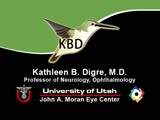 |
1-18 | Hemifacial Spasm | Example of patients with hemifacial spasm. First patient has a sequela of Bell's palsy, and is seen to have mainly clonic movements around the eye, with occasional tonic movements around the mouth. Second patient has a cerebellopontine angle epidurmoid tumor, and is seen to have movements around the... | Hemifacial Spasm |
| 52 |
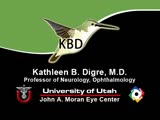 |
1-1 | How to Measure the RAPD | This clip demonstrates the examination technique for measuring the Relative Afferent Pupillary Defect (RAPD). Demonstration of balancing an afferent papillary defect using filters in a patient with a resolving optic neuritis and an afferent papillary defect on the left. | Relative Afferent Pupillary Defect (RAPD); Examination, Pupillary |
| 53 |
 |
ophthalmoscope | How to Use the Direct Ophthalmoscope in an Exam | Demonstration of using the direct ophthalmoscope to examine the optic disc. Covers hand placement , which eye to use, and distance from patient. | Direct Ophthalmoscope; Examination, Ocular |
| 54 |
 |
NOVEL_Moran_3a-12 | Intermittent Square Wave Jerks | Patient with intermittent square wave jerks (no audio) | Intermittent Square Wave Jerks |
| 55 |
 |
1-8 | Internuclear Ophthalmoplegia (2 Examples) | Two examples of patients with internuclear ophthalmoplegia. First patient has a right internuclear ophthalmoplegia. Patient had subacute bacterial endocarditis with a bacterial abscess in the brain stem. Ductions and gaze to the right look good, but when gazing to the left, the right eye does not ad... | Internuclear Ophthalmoplegia; Abducting Nystagmus |
| 56 |
 |
2-2 | Latent Nystagmus | Example of a patient with latent nystagmus. Demonstrates a lack of oscillations in forward gaze, followed by the occlusion of each eye, showing how this generates a jerking oscillation in the non-occluded eye away from the occluded eye. | Latent Nystagmus; Fusional Maldevelopment Nystagmus Syndrome |
| 57 |
 |
1-26 | Levator Disinsertion | Example of patient with levator disinsertion, a lid disorder. Patient is pregnant and wears poorly fitting contacts. Discussion of characteristics, such as lid ptosis (shown in the left eye of patient), but with full levator function. | Levator Disinsertion; Levator Dehiscence |
| 58 |
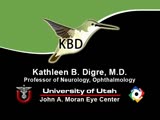 |
1-3_5 | Light-near Dissociation | Example of patient with Argyll Robertson pupil with neurosyphilis. Shows a lack of pupillary response to light and some pupillary response to nearness of finger. | Light-Near Dissociation; Argyll-Robertson Pupil |
| 59 |
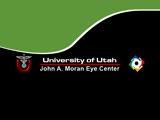 |
NOVEL_Moran_2-31 | Marcus Gunn Jaw Winking | Example of patient with Marcus Jaw Winking. Patient is led through instructions for movement of jaw (open, close, back and forth), with eyelid seen to be affected. Patient is then led through instructions for direction of gaze and pursuit. | Marcus Gunn Jaw Winking |
| 60 |
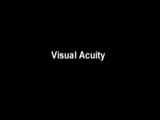 |
visual_acuity | Measuring Visual Acuity | Demonstration on self of visual acuity exam, using a standard card. | Visual Acuity; Examination, Ocular |
| 61 |
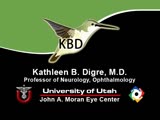 |
2-9 | Monocular Pendular Nystagmus | Example of a patient with monocular pendular nystagmus, with discussion of situations in which this condition is seen: acquired disorder of the visual-sensory pathway, and acquired disorder of the brain stem (e.g. multiple sclerosis). | Monocular Pendular Nystagmus; Sensory Nystagmus; Pendular Nystagmus; Acquired Pendular Nystagmus |
| 62 |
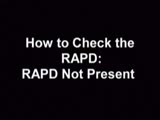 |
RAPD_Not_Present | Normal Light Reflex without RAPD | This clip demonstrates the examination of the Relative Afferent Pupillary Defect (RAPD.) Demonstration of gauging the size of the pupil in light, testing light reflexes, swinging flashlight test for optic nerve abnormality. | Relative Afferent Pupillary Defect (RAPD); Examination, Pupillary; Swinging Flashlight Test |
| 63 |
 |
2-17 | Ocular Flutter | Two examples of patients, the first with rotary, flutter-like movements, but not ocular flutter, and the second with genuine ocular flutter. Discussion of difference between ocular flutter and nystagmus, and how to elicit ocular flutter. | Ocular Flutter |
| 64 |
 |
1-9 | Ocular Lateropulsion (Wallenberg's Syndrome) | Example of patient with ocular lateropulsion. Patient also has central Horner syndrome and nystagmus in right gaze. When shifting gaze back to forward, eyes overshoot their mark. Eyes laterally deviate to the right upon opening. | Ocular Lateropulsion; Wallenberg's Syndrome; Lateropulsion; Lateral Medullary Syndrome; Posterior Inferior Cerebellar Artery; Wallenberg Syndrome |
| 65 |
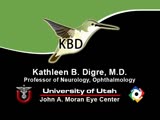 |
1-23 | Ocular Myasthenia | Example of patient with myasthenia gravis. Demonstration of tensilon test. Patient shown to have bilateral ptosis, bilateral duction deficits, and left hypertropia. Discussion of techniques to observe subtle changes, such as bringing in a neutral observer or taking still photographs. Shows split-scr... | Ocular Myasthenia; Myasthenia Gravis; Ptosis, Myasthenic; Tensilon Test |
| 66 |
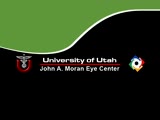 |
NOVEL_Moran_2-29 | Ocular Myotonia | Example of patient with ocular myotonia. Patient is led through instructions for direction of gaze and opening and closing of eyes. Right eye is shown to be stuck in position after held gaze to the left and right, with very slow relaxation back into forward gaze. | Ocular Myotonia; Ocular Neuromyotonia; Dystrophies |
| 67 |
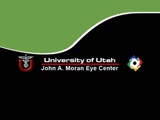 |
Oculopalatal-Myoclonus-Williams | Oculopalatal Myoclonus | Oculopalatal myoclonus (OPM) Rhythmic oscillations of eyes and palate. Occurred after specific brainstem injury from stroke, following stenting. Related PowerPoint Presentation: http://content.lib.utah.edu/u?/EHSL-Moran-Neuro-opth,129 Disease/Diagnosis: Oculopalatal myoclonus. | Oculopalatal Myoclonus |
| 68 |
 |
Oculopalatal_Myoclonus_LWilliams.pdf | Oculopalatal Myoclonus (PPT) | Oculopalatal myoclonus (OPM) Rhythmic oscillations of eyes and palate. Occurred after specific brainstem injury from stroke, following stenting. Related Video: http://content.lib.utah.edu/u?/EHSL-Moran-Neuro-opth,128 Disease/Diagnosis: Oculopalatal myoclonus | Oculopalatal Myoclonus |
| 69 |
 |
1-15b | Opsoclonus | Example of patients with opsoclonus, a saccadic abnormality. | Opsoclonus |
| 70 |
 |
1-15 | Opsoclonus | Example of patients with opsoclonus, a saccadic abnormality. Discussion of characteristics of opsoclonus, such as involuntary, rapid, brief, random, conjugate saccades. Discussion of possible causes, including brain stem encephalitis (as in first patient), a paraneoplastic effect, tumors, and drug t... | Opsoclonus |
| 71 |
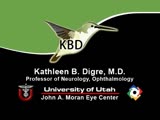 |
1-4 | Paradoxical Constriction of Pupils to Darkness (Flynn Phenomenon) | Example of patients both with and without paradoxical constriction of pupils. Observed in many congenital retinal disorders, such as achromatopsia, congenital stationary night-blindness, and Leber's congenital amaurosis. Sometimes seen in optic nerve disorders, such as dominant optic atrophy. | Pupil; Flynn Phenomenon |
| 72 |
 |
1-16 | Parinaud's Syndrome | Two examples of patients with Parinaud's syndrome, a dorsal midbrain syndrome. Discussion of hallmarks of this syndrome, including convergence retraction nystagmus, vertical gaze palsies, light-near dissociation, and Collier's Sign. Discussion of age-dependent disorders associated with this syndrome... | Parinaud's Syndrome; Dorsal Midbrain Syndrome |
| 73 |
 |
2-12 | Periodic Alternating Nystagmus | Example of a patient with periodic alternating nystagmus, showing an alternation between left-beats and right-beats as the patient maintains forward gaze. Nystagmus maintain horizontal direction regardless of position of gaze. | Periodic Alternating Nystagmus |
| 74 |
 |
2-16 | Physiologic (End-Gaze) Nystagmus | Demonstration of physiological nystagmus, where oscillations do not represent pathology, but occur when the patient's gaze is drawn too far laterally. | End-Gaze Nystagmus; Physiologic Nystagmus |
| 75 |
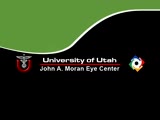 |
NOVEL_Moran_1-8 | Progressive Supranuclear Palsy | Progressive Supranuclear Palsy | Progressive Supranuclear Palsy |
